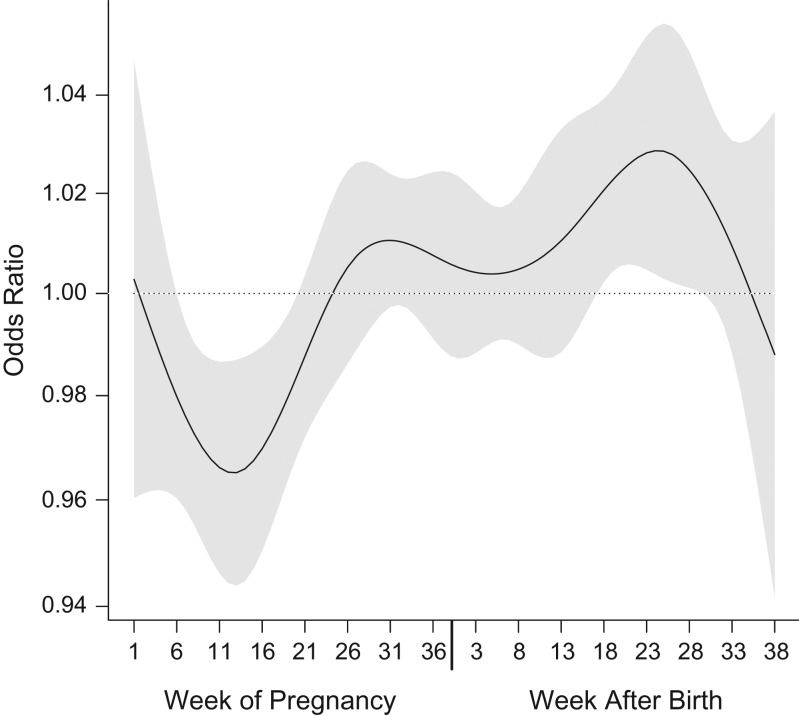Figure 1.
Results from a distributed-lag model representing polynomial time-dependent associations between weekly nitrogen dioxide exposure and risk of autism spectrum disorder among children born in central coastal Israel during 2005–2009 (reproduced with permission from Raz et al. (5)). The black line represents the time-varying function estimating risk of autism spectrum disorder with weekly exposures during 38 weeks of pregnancy (left) and the first 38 weeks of life (right), and the gray area around it represents its 95% confidence interval. These results are from a nonlinear distributed-lag model with 7 degrees of freedom. A linear association was assumed between the exposure and the outcome at each time point. Results were adjusted for year of birth, calendar month of birth, population group, paternal age, and census poverty index.

